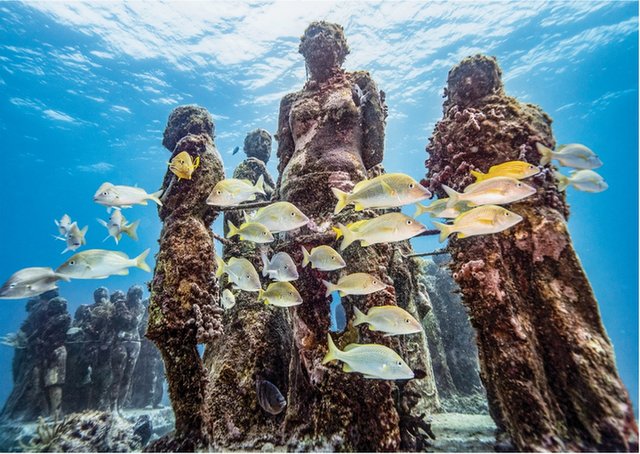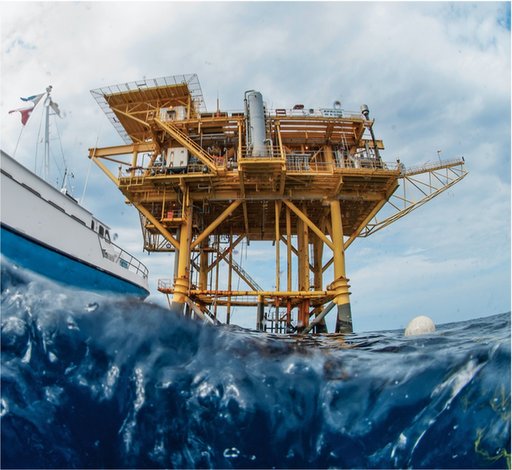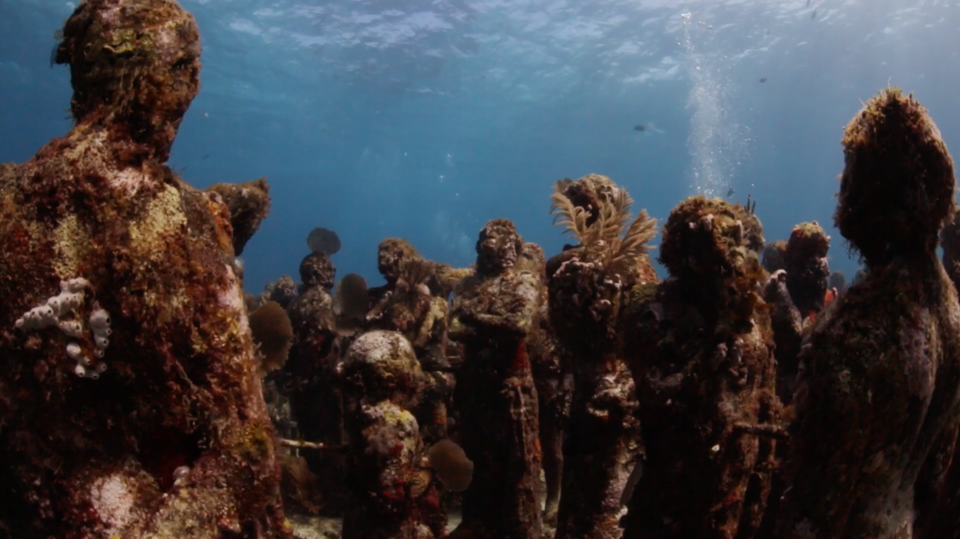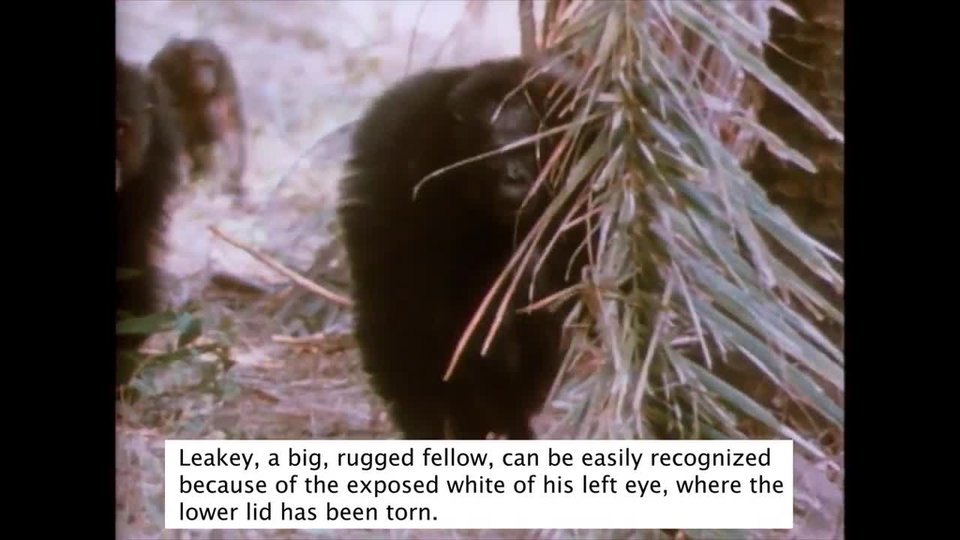GettingStarted
Toprotectnaturalreefs,wecanstartbuildingnewreefs,artificialones.Artificialreefsmimic,orcopy,naturalones.But,theycanbecreatedfordifferent purposes.
Someartificialreefspreventcoastalerosion.Theyforcewavesoffshoreratherthanlandingonthecoastline.Othersaremeanttoholdsedimentonbeaches.Stillothersareahabitatforfishandotheraquatic life.
Tobuildanartificialreef,alargeobjectisinstalledinanareawheretheseabottomisflatandfeatureless.Whenoceancurrentsmeetwithanobject,anupswellingofplanktonoccurs.Smallfishcannowfeed.This,inturn,drawslargerfishtothe area.
Overmonthsandyears,algae,barnacles,andoysterscanattach.Astimepasses,acomplexanddiversecommunityofsealifebecomesconnectedtothe object.

Thesestatueshavebeen underwaterforseveralyears.Coralsand algae growonthem.Fishswimamong them.

ArtistJasondeCaires Taylorcarefullycraftsthefaceon one oftheunderwater statues.
SeedingSolutions
Creatinganartificialreeftakestime.MUSApresidentRobertoAbrahamsaysthatoneofthegreatestchallengesincreatingtheunderwatersculptureswasusingtheright cement.
Ifthecementisn’tstrongenough,thestatuescrumbleovertime.Ifthesurfaceistooacidic,coralsandalgaecan’ttakeholdand grow.
OncetheMUSAstaffandartistsfoundtherightmix,theywereabletocreatethestatues.Then,theyhand-seededmanyofthestatues.Theyplacedyoungstaghorncoralpolypsonthesurfacetogivethegrowthaheadstart.Thechangeisslow,butmiraculous.“Theyevolveeveryday,”Abraham says.
CoralsdecoratetheseMUSA statues.
RepurposingRigs
Artisn’ttheonlywaytomakeanartificialreef.Abandonedoilrigscanalsodoubleasreefs!Oilrigsarehugestructuresbuiltindeepwater.Usually,they arebuiltonclay,mud,andsand.It’swherepeopledrillfor oil.
Whentheserigsarenolongerinuse,theRigstoReefsprogramturnsthemintodeep-seaartificialreefs.IntheUnitedStates,manyoftheGulfStatesparticipateinthisprogram.Todate,morethan500rigshavebeenconvertedtoreefs,mostlyinTexasand Louisiana.

Thisrigmayonedaybecomepartofanartificial reef.

Surroundedbyfish,thesecoralsgrowonanartificial reef.
HelpingOutaGiant
Atypicalrigcanprovideahabitatforasmanyas14,000fish!Arigcansupportmoremarinelifethannaturalreefsdo.Thesteelisagoodsurfaceforcoralsandsponges.Redsnapper,hogfish,andbarracudasmaketherigstheir home.
Theserigsareevenhelpingtobringbackathreatenedspecies.Goliathgroupershavebeenprotectedsince1990butarestillvulnerable.Thesefishcanweighalmost363kilograms
(800pounds).Inrecentyears,theyhavebeenmostabundantneardeep,artificial reefs.

